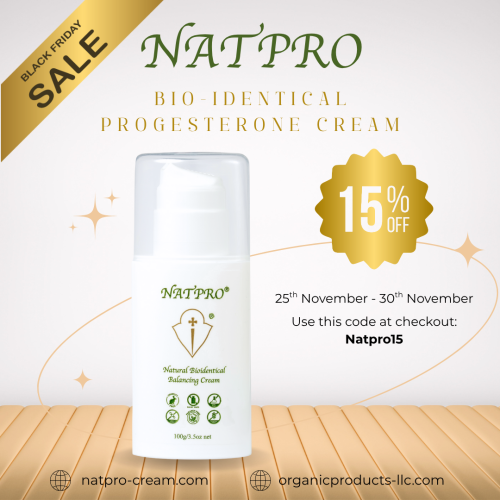Progesterone
Comments from a global authority...
- What is the difference between progesterone creams and wild yam creams?
- Can it be absorbed though the skin?
- Why is the saliva test the only reliable one?
These and other questions answered in this hard hitting statement by David Zava, Ph.D., who is director of research for ZRT Laboratory in Portland, Oregon, USA.
In trying to find something to alleviate hot flashes for women who had had chemotherapy for breast cancer, Dr. Zava began investigating progesterone content in skin (transdermal) creams. Below are some of his comments about a panel discussion between members of the medical profession...
"I have recently been barraged by requests from colleagues to respond to the panel moderated by Dr. Sadja Greenwood concerning OTC [over-the-counter] progesterone creams.
The question was asked of the panelists if they thought progesterone in a cream base can be absorbed through the skin. Two of the panelists agreed that does penetrate the skin quite readily, but Dr. Chatterton went on to comment that "You'd need a lot of cream to achieve progesterone levels comparable to the 20-25 mg per day produced during the luteal phase of the menstrual cycle."
I don't think the panelists realize two very important facts. The first is that nearly all of the OTC cream products are formulated to deliver about 15 to 30 mg of USP grade progesterone per 1/4 tsp. of cream. The second is that, of the common steroids produced in the body (estradiol, progesterone, testosterone, cortisol, etc.), progesterone is the most readily transported across the skin. It is transported more efficiently across the skin than is estradiol. Progesterone is a nonpolar, fat-loving molecule. It isn't particularly fond of a water environment and seeks out a nonpolar environment, which is fat tissue or any other nonpolar regions such as the surface membranes of all living cells.
Some years ago scientists recognized that when you put progesterone in blood, about 50 to 80% of it goes directly into red blood cells. This shouldn't be surprising, because the plasma membrane of red blood cells is nonpolar. It's simple chemistry - like dissolves like.
So when it penetrates rapidly through the skin, which we know it does, it seeks out a nonpolar fatty environment. We believe that when progesterone, as well as other steroid hormones, penetrate the skin and enter the bloodstream they bind to fatty substances such as the fatty membrane of blood cells. Since the red blood cells comprise most of the circulating cellular compartment of blood, they would be expected to carry most of the progesterone.
When blood is drawn for routine serum hormone testing, red blood cells are first removed by centrifugation and only the upper serum fraction is analyzed for hormones. In running serum tests for hormones, doctors make the assumption that the serum results closely reflect the levels of progesterone circulating in whole blood, which includes the cellular compartment they throw away. This is a valid assumption if the hormone is produced within the body (endogenously) or is taken orally because most of the hormone circulates in the serum compartment of blood. However, this is not a valid assumption if the hormone is delivered through the skin because most of the hormone circulates in the cellular compartment of blood and is thrown out and never evaluated.
The actual bioavailable fraction present in whole blood includes the small one to five percent of progesterone that is released from serum-binding proteins, but also that released from red blood cells. Because saliva levels are much higher with delivery of hormones through the skin, we believe that the fraction of hormone bound to red blood cells must be more bioavailable. We base this on the fact that when progesterone and other steroid hormones are delivered through the skin, the saliva levels are five to ten times higher than serum levels. We do not see this with hormones produced endogenously or with hormones taken orally. In this case, the saliva levels are generally only about one to five percent of the serum levels. What is not described in textbooks is this very different transport of hormones when they are delivered into the body through the skin.
For this reason, saliva is the only way to assess accurately the true bioavailable level of hormones delivered through the skin. This is also why there has been such a gross underestimation of the biopotential of transdermal creams. What this means is that progesterone, as well as other hormones delivered through the skin would be clinically more effective at a much lower dose than when delivered orally. This is exactly what we find when the dosing requirements for oral delivery of hormones are compared with skin delivery of hormones.
For example, we know that 50 micrograms/day of estradiol delivered through the skin by a patch eliminates hot flashes and prevents bone loss. It takes 500 to 2000 micrograms of oral estadiol, ten to forty times more, to achieve the same clinical benefits. You have the same story for the testosterone patch vs. oral delivery - it takes about 10 times more when delivered orally. So if progesterone is the most readily absorbed of all the steroid hormones, then it stands to reason that, relative to oral dosing, it would take much less of it to achieve a clinical response such as protection of the endometrium. Progesterone delivered orally is clinically effective at 200 mg so for the same reason as described for estradiol and testosterone, why wouldn't you expect 20 mg of progesterone delivered through the skin to be at least as effective as 200 mg delivered orally?
Unfortunately, there are no clinical studies yet to prove that the 15 to 30 mg of progesterone ordinarily delivered through the skin with OTC creams is protective of the endometrium. However, there is an excellent study reported in the April, 1995, issue of Fertility and Sterility demonstrating that 25 mg of progesterone applied to the breast protects against breast ductal cell proliferation induced by estradiol. Progesterone levels in the breast tissue itself were 100 times higher, proving unequivocally that it does absorb through the skin into the body.
As regards the protective effects to the endometrium, anecdotal reports from many physicians say OTC creams that contain 1.5-3% progesterone are protective. Unfortunately, anecdotal stories lump all OTC progesterone and wild yam creams together. Clinicians not familiar with OTC creams often do not know whether the product used by the patient was one that actually contained progesterone, or only the wild yam extract. That is why Aeron LifeCycles Laboratory in San Leandro, Calif. tested and published the progesterone content of many of the popular OTC creams (also in Menopause News, January/February 1997).
Many physicians are, understandably, reluctant to use progesterone skin creams, be they OTC or compounded by a pharmacy, because their clinical efficacy has not been proven by a controlled clinical study. We should have an answer to this question of the protective effect of OTC creams on the uterine lining very soon. Dr. Helene Leonetti is currently doing a blinded clinical study to look at the clinical effectiveness of OTC progesterone creams on bone density and protection against endometrial hyperplasia.
Dr. Liu seems concerned about our claims that saliva assays are more accurate than blood tests.
Given the above, I think it's clear why this is so. I would challenge Dr. Liu to measure blood and saliva levels following oral vs. transdermal delivery of progesterone, and then explain why the saliva levels are at least five times higher than the serum levels. Trapping and concentrating the progesterone in the saliva is not a rational explanation because this would also happen with oral dosing, and it does not.
Dr. Chatterton goes on to say that "progesterone in saliva is only a filtate of blood, so how can it be more sensitive." It is more sensitive because it is a filtrate. Target tissues of the body receive this same filtrate as it represents the bioavailable fraction. It's the bioavailable fraction that is the most relevant to tissue response. Serum testing grossly underestimates the bioavailable level of hormones delivered through the skin.
Dr. Kronenberg comments that "problems may arise when they (women) use the cream without consulting their clinician, thinking it's accomplishing something that it's not." Quite frankly, my experience in talking to hundreds of women using OTC creams is that they know exactly what they're doing, how much progesterone they are taking, and why. The only reason they don't talk to their doctors about it is because they know their doctors won't listen to them, will tell them there have not been enough studies done on these "alternatives" (with a little chuckle), or will try to convince them that they might get heart disease, osteoporosis, or Alzheimer's disease if they don't take Premarin and Provera.
Thank goodness many doctors are now listening to and learning about the benefits of transdermal progesterone from their patients.
One last comment I would like to make about this interview. I find it absolutely amazing that there was no mention by any of the panelists of two human clinical studies recently reported that shine a very positive and bright light on natural progesterone.
The first is that of a French-Taiwanese study showing that 25 mg of progesterone (the same amount found in 1/4 tsp. of most of the OTC creams) lowers the proliferation rate of the breast epithelium, protecting it from overstimulation by estradiol. Relief from fibrocystic breasts, a common problem in women overexposed to estrogens, is one of the many benefits of transdermal creams.
We know from this study that the progesterone levels in the breast tissue increases 100-fold when is applied to the breast. How does Dr. Liu explain progesterone penetrates deep into the breast tissue based on his statement that "absorption through the skin is insufficient to achieve even the nanogram levels you'd expect in the menstrual cycle"?
Is this not a significant biological effect that might have clinical application for prevention of breast cancer? Why was this not discussed? Why didn't the panel bring up the recent paper published by Mohr and colleagues showing that women who have a significant level of progesterone in their bloodstream when operated on for breast cancer have a much lower probability of recurrence if they were node positive.
The survival differences are astounding and far surpass any pharmaceutical product that has attempted to prevent breast cancer or delay recurrence. Survival is only about 35% in women who had low progesterone in their bloodstream, and nearly 70% for those who had high levels. Why aren't more studies following up on these incredibly remarkable findings?
Why weren't the panelists excited about the implications of this study for its enormous potential to use progesterone to prevent breast cancer recurrence or to treat postmenopausal women with it before surgeryto reduce the likelihood of recurrence?
Finally, I would challenge the doctors of this panel to prove that OTC creams are not clinically effective for protecting the endometium as well as the breast ductal epithelium. I challenge them to show me one study that proves transdermal progesterone is NOT effective. And if they retort that there are no controlled clinical studies to prove it is protective, I would concede they are correct. But then let them tell me who will fund such a study."
For more on progesterone therapy please click here.
 Are you struggling with irregular cycles, unwanted hair growth, or unexplained fatigue? You’re not alone. Polycystic Ovarian Syndrome (PCOS) affects up to 10% of women of reproductive age—and many mor…
Are you struggling with irregular cycles, unwanted hair growth, or unexplained fatigue? You’re not alone. Polycystic Ovarian Syndrome (PCOS) affects up to 10% of women of reproductive age—and many mor… While progesterone is often discussed in relation to reproductive health, emerging research reveals its remarkable role in supporting brain function and protecting against neurological decline. Proges…
While progesterone is often discussed in relation to reproductive health, emerging research reveals its remarkable role in supporting brain function and protecting against neurological decline. Proges… Incase you missed it!
Today is the last day for you to claim 15% off our Natpro 100ml Dispensers. The sale ends at midnight tonight.
How to Claim Your 15% Discount:
•Shop at
Incase you missed it!
Today is the last day for you to claim 15% off our Natpro 100ml Dispensers. The sale ends at midnight tonight.
How to Claim Your 15% Discount:
•Shop at  To all our valued customers, We’ve heard your requests for more flexibility with payment options and clearer access to usage and dosage instructions, and so we’re delighted to announce the launch of o…
To all our valued customers, We’ve heard your requests for more flexibility with payment options and clearer access to usage and dosage instructions, and so we’re delighted to announce the launch of o…